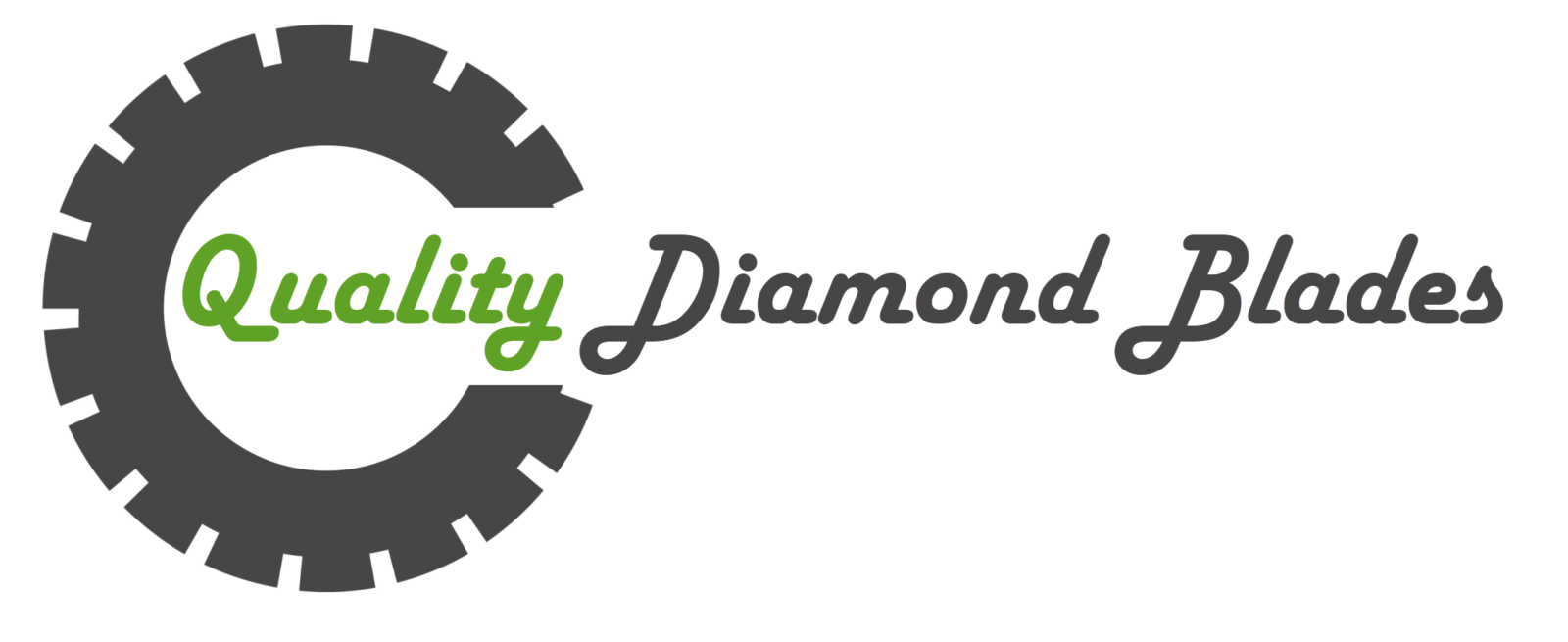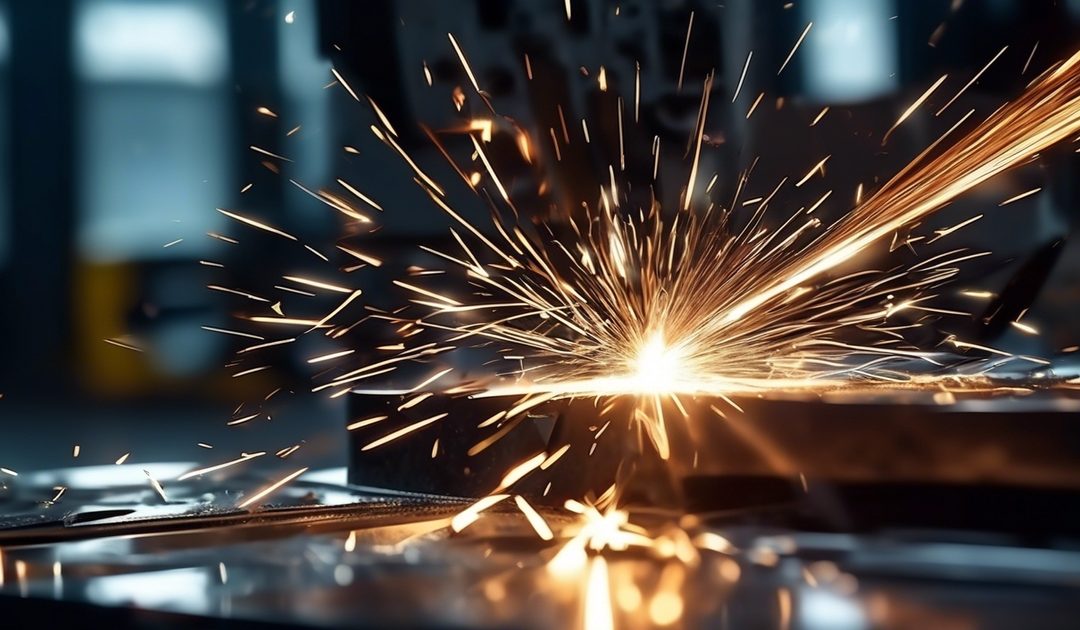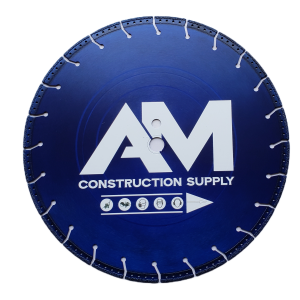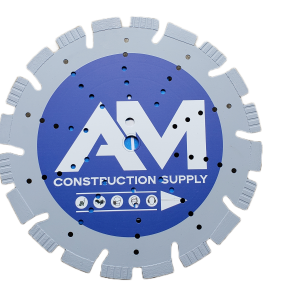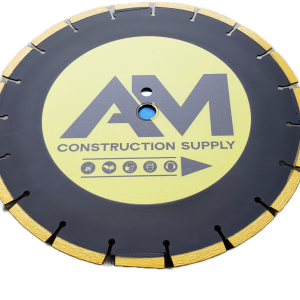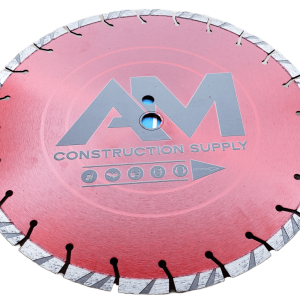-
-
What factors should be considered when selecting a diamond blade for cutting steel?
-
Are there specific safety measures to follow when using diamond blades to cut steel?
-
How does the cost of using diamond blades compare with other methods for cutting steel?
-
Can precise cuts be achieved in different types of steels using diamond blades?
Wondering if it’s possible to cut steel with a diamond blade? This blog post delves into the intriguing world of diamond blades and their capabilities. Whether you’re a professional in the construction industry or an avid DIY enthusiast, understanding the potential of diamond blades is crucial. From discussing the science behind diamond blades to exploring their applications across various materials, this post aims to provide comprehensive insights.
Cutting through misconceptions and unveiling practical tips, this piece equips readers with essential knowledge about using diamond blades effectively. So, if you’ve ever pondered whether a diamond blade can handle steel or other tough materials, this article is your definitive guide.
Key Takeaways
-
Use the Right Blade: When cutting steel with a diamond blade, ensure that you select the appropriate blade designed specifically for cutting steel to achieve the best results.
-
Prioritize Safety: Adhere to safety measures such as wearing protective gear, ensuring a stable work surface, and following manufacturer guidelines to minimize the risk of accidents when using diamond blades for steel cutting.
-
Consider Longevity: Take into account the longevity and wear considerations of diamond blades when cutting steel, as this can impact the overall cost and efficiency of the cutting process.
-
Choose Wisely for Reinforced Steel: When dealing with reinforced steel concrete, carefully select a diamond blade that is suitable for this specific application to ensure effective and precise cutting.
-
Optimize for Cost Efficiency: Conduct a cost analysis to determine the most cost-effective diamond blade for your steel cutting needs, considering factors such as durability, performance, and initial investment.
-
Aim for Precision: To achieve precise cuts in steel, invest in high-quality diamond blades and follow recommended techniques to ensure accuracy and smooth cutting operations.
Understanding Diamond Blades
Cutting Mechanics
Diamond blades are designed to grind through steel using abrasive particles. The cutting process involves generating friction and heat, which helps in efficiently cutting through the tough steel material. Proper cutting mechanics play a crucial role in ensuring that diamond blades effectively cut through steel.
The friction generated during the cutting process, aided by diamond crystals, is essential for wearing down the steel material, while the heat aids in softening it, making it easier to cut. This combination of friction and heat allows diamond blades to make precise cuts on steel surfaces without causing damage or deformation.
For example, when a segmented diamond blade is used for cutting thick steel plates, the individual segments grind against the surface due to their exposed edges. This action creates enough friction and heat, with diamond crystals, to gradually wear away at the metal until it’s severed completely.
Blade Components
Diamond blades consist of two primary components: a steel core and diamond segments. The synthetic or natural diamonds embedded within these segments provide the necessary hardness and abrasiveness required for cutting through hard materials like steel.
The purpose of the steel core and diamond crystals is to provide structural support for the blade while also ensuring stability during operation. It prevents flexing or bending during use, maintaining precision and safety throughout the cutting process.
Understanding how these components work together can help users select an appropriate diamond blade based on their specific needs. For instance, when working with thicker gauge stainless-steel tubing, a continuous rim diamond blade would be more suitable due to its smooth edge design allowing for clean cuts without chipping or excess material loss.
Types of Diamond Blades
There are several common types of diamond blades used for various applications such as segmented, continuous rim, and turbo designs. Each type serves different purposes depending on factors like speed requirements or surface finish specifications. For instance:
- Segmented diamond blades are ideal for fast-cutting applications where chip-free finishes aren’t critical.
- Continuous rim (or wet) diamond blades provide smoother cuts with minimal chipping but may require water cooling during operation. Understanding these differences enables users to choose an appropriate type of blade based on their specific requirements.
Diamond Blades and Steel Interaction
Metal Cutting Capabilities
Diamond blades are indeed capable of cutting various metals, including steel. Their unique composition with embedded diamond crystals enables them to deliver high precision and efficiency in metal cutting. Understanding these capabilities is crucial for achieving optimal performance when using diamond blades for steel cutting.
For instance, when a construction worker needs to cut through a thick steel beam at a precise angle, they can rely on the sharpness and durability of a diamond blade to accomplish this task effectively. The ability of diamond blades to maintain their sharpness during prolonged use makes them highly suitable for intricate metal cutting tasks.
Due to the exceptional hardness of diamond, these blades excel at maintaining their shape and edge quality even after extended usage. This characteristic ensures that they continue delivering precise cuts throughout their lifespan, making them an ideal choice for demanding metal fabrication applications.
Steel Specificity
Diamond blades are effective for both mild and stainless steel materials. However, it’s important to note that different blade specifications may be required depending on the type of steel being cut. For instance, while mild steel can typically be cut using general-purpose diamond blades designed for metal cutting applications, stainless steel may require specialized or coated diamond blades due to its hardness and abrasiveness.
Proper selection of the right type of diamond blade is essential for achieving precise cuts without compromising on efficiency or safety. By choosing the appropriate blade specifically tailored for the type of steel being worked on, users can ensure minimal material wastage and reduced production time while also prolonging the lifespan of their equipment.
Selecting the Right Diamond Blade
Segmented vs Continuous Rim
Segmented blades are perfect for dry cutting steel as they dissipate heat effectively. This design prevents overheating, ensuring a smooth and efficient cutting process. On the other hand, continuous rim blades offer smoother cuts but may require water cooling to avoid overheating. Choosing between these two designs is crucial as it directly impacts the effectiveness of cutting steel.
For instance:
- When using a segmented blade for dry cutting steel, the gaps between the segments allow better airflow, preventing excessive heat buildup.
- Conversely, continuous rim blades provide continuous contact with the material, resulting in cleaner cuts but necessitating water cooling to manage temperature levels.
Understanding the nature of your project and considering factors like heat dissipation and cooling requirements will help you make an informed decision about which blade design best suits your needs.
Blade Sizes
Diamond blades come in various sizes suitable for different tools and applications. Selecting the appropriate size ensures compatibility with your equipment while also influencing cut depth and precision when working with steel.
For example:
- A smaller diamond blade might be suitable for handheld grinders or circular saws used on thinner pieces of steel.
- Larger diamond blades are more compatible with walk-behind saws or masonry saws designed for thicker metal sections.
Effectiveness for Various Steel Types
Mild Steel Cutting
Cutting mild steel with a diamond blade requires specific characteristics in the blade. The proper technique and selection of the blade are crucial to prevent overheating during cutting. Understanding the properties of mild steel is essential for successful cutting.
When using a diamond blade to cut mild steel, it’s important to choose a blade that has been specifically designed for this purpose. These blades typically have segmented edges that help dissipate heat more effectively, preventing overheating during the cutting process. Employing the right technique, such as maintaining a consistent speed and pressure while cutting, can further prevent overheating and ensure clean cuts.
Mild steel possesses different properties compared to other types of steel, so having an understanding of its characteristics is vital when using a diamond blade for cutting purposes. For example, mild steel is relatively soft and easy to work with compared to stainless or hardened steels. This knowledge will inform the choice of equipment and techniques used when working with this type of material.
Stainless Steel Adaptability
Using diamond blades with high abrasion resistance is crucial for effective cutting. Due to stainless steel’s hardness and toughness, selecting an appropriate diamond blade becomes paramount in achieving efficient results without damaging the material.
In some cases, coolant usage may be necessary when cutting stainless steel using a diamond blade. The application of coolant helps dissipate heat generated during the cutting process while also reducing friction between the material being cut and the saw blade itself.
Considering stainless steel’s unique properties ensures that both equipment selection and operational techniques align with its requirements. By taking into account factors such as hardness and abrasiveness characteristic of stainless steel, users can optimize their approach when utilizing diamond blades for precision cuts on this particular material.
Cutting Reinforced Steel Concrete
Blade design plays a crucial role in determining the effectiveness of cutting reinforced steel concrete. The design directly impacts factors such as speed, precision, and heat generation during the cutting process. Understanding how blade design influences performance is essential for selecting the most suitable blade for cutting steel.
Different blade designs are specifically tailored to cater to various steel cutting requirements. For instance, some blades are engineered with special segments or rims designed to withstand the hardness of steel and efficiently dissipate heat generated during cutting. These specialized designs ensure that the blade can maintain its sharpness and effectiveness when used for prolonged periods on tough materials like reinforced steel concrete.
In terms of steel cutting, it’s important to consider not only the material being cut but also other elements such as aggregate type and density within the concrete mix. This knowledge allows operators to select a diamond blade with a compatible segment height, bond hardness, and diamond concentration best suited for efficient steel cutting applications.
Employing proper feed rate and pressure application is vital. Maintaining consistent speed while avoiding excessive force ensures high-quality cuts without compromising safety or risking damage to both equipment and materials.
Adhering to recommended techniques not only enhances cut quality but also prolongs the lifespan of the diamond blade itself. An example includes utilizing water cooling systems where applicable when making deep cuts into heavily reinforced concrete structures or slabs containing substantial amounts of embedded metal rebar.
Understanding how different factors influence each other during cutting operations is crucial for achieving optimal results when working with hardened materials like reinforced steel concrete.
Longevity and Wear Considerations
Blade Life Span
Factors such as material hardness and operating conditions significantly influence the longevity of a diamond blade. For instance, cutting through hard steel will wear down the blade faster than cutting through softer materials. Regular inspection and maintenance play a crucial role in extending the blade’s life span. Understanding the expected life span of a diamond blade is essential for cost-effective planning, ensuring that replacements are scheduled at appropriate intervals.
Regular inspection and maintenance contribute to extending the blade’s life span by identifying signs of wear or damage early on. By doing so, users can avoid unexpected failures during operation, which could lead to costly downtime or potential safety hazards. This proactive approach not only saves time but also prevents unnecessary expenses associated with premature replacements.
Maintenance Tips
To ensure optimal performance, it is important to engage in regular cleaning practices that prevent debris buildup on the diamond segments of the blade. Accumulated debris can hinder cutting efficiency and cause unnecessary stress on both the blade and equipment used in conjunction with it.
Checking for segment wear and core damage is another critical aspect of maintaining a diamond blade’s effectiveness over time. Any signs of segment wear should prompt immediate action to prevent further deterioration that could compromise cutting quality or even lead to safety risks during use.
Following manufacturer-recommended maintenance guidelines maximizes a diamond blade’s effectiveness throughout its operational life cycle. These guidelines often include specific instructions for cleaning, storage, usage parameters, and periodic inspections designed to ensure safe operation while maximizing longevity.
Safety Measures for Cutting Steel
Protective Gear
When using diamond blades to cut steel, it’s crucial to wear the right protective gear. This includes safety goggles, gloves, and hearing protection. Wearing proper attire safeguards against potential hazards during steel cutting operations. Prioritizing safety gear minimizes the risk of injuries that could occur from metal shards or sparks.
Operational Precautions
To ensure a safe working environment when cutting steel with a diamond blade, it’s important to take operational precautions. One key precaution is ensuring a stable workpiece setup. This prevents accidents and ensures precision during the cutting process. It’s essential to avoid sudden movements or overexertion while operating equipment with diamond blades.
When using diamond blades to cut steel, investing in the appropriate protective gear is vital for personal safety. Safety goggles protect the eyes from metal fragments and sparks produced during cutting operations. Wearing gloves shields hands from sharp edges and hot surfaces on freshly cut steel pieces. Hearing protection helps minimize exposure to loud noises generated by power tools used in steel cutting processes.
Prioritizing safety gear not only protects individuals but also promotes a secure working environment where employees can perform their tasks confidently and without unnecessary risks. Operational precautions such as ensuring a stable workpiece setup are critical for maintaining precision while preventing accidents during the steel-cutting process. Avoiding sudden movements or overexertion also contributes significantly to creating a safer workspace when utilizing diamond blades for cutting steel materials.
Cost Analysis of Diamond Blades for Steel
Initial Investment
When considering cutting steel with a diamond blade, the initial investment is crucial. The cost of diamond blades varies based on their size, type, and quality. Investing in high-quality blades might seem expensive initially, but it ensures long-term performance and cost savings. For example, a higher initial investment in a premium diamond blade can result in extended durability and fewer replacements over time.
Understanding the long-term benefits of the initial investment is essential when cutting steel with a diamond blade. It’s important to weigh the upfront costs against potential long-term savings. By investing in high-quality blades at the beginning, individuals or businesses can avoid frequent replacement costs and achieve more consistent cutting performance.
Long-Term Value
High-quality diamond blades offer significant long-term value when cutting steel. Their durability reduces the frequency of replacements, leading to overall cost savings over time. This means that although premium diamond blades may have a higher upfront cost, they provide extended usage before needing replacement.
Moreover, when using high-quality diamond blades for cutting steel, there are additional factors to consider beyond just the material costs. These include productivity gains due to efficient cutting performance and reduced downtime from fewer blade changes or maintenance needs.
Achieving Precise Cuts in Steel
Cut Quality
Diamond blades are capable of delivering precise cuts with minimal material wastage in steel cutting applications. The sharpness of the blade directly impacts the quality of the cut. When a diamond blade is used, it ensures that the steel is precisely cut without any jagged edges or imperfections. This level of precision enhances the overall project outcomes, as it reduces the need for additional finishing work and ensures that materials are utilized efficiently.
Factors such as proper blade maintenance and ensuring that the diamond blade remains sharp play a crucial role in achieving superior cut quality. For instance, regularly inspecting and sharpening the thin grinding wheel, which is commonly used in conjunction with diamond blades for steel cutting, helps maintain its effectiveness over time. By prioritizing these factors, contractors can consistently achieve high-quality cuts when working with steel.
Techniques for Precision
Implementing proper cooling methods during prolonged steel cutting processes contributes to maintaining precision throughout each cut. Utilizing advanced techniques like pre-scoring also plays a significant role in enhancing precision when dealing with complex cuts on steel materials. Pre-scoring involves creating initial shallow grooves along the intended cutting path before making a full-depth cut using a diamond blade.
Closing Thoughts
In conclusion, choosing the right diamond blade for cutting steel is crucial to ensure efficiency, precision, and safety. Understanding the specific requirements for different types of steel and considering factors such as blade longevity, wear, and cost are essential in making an informed decision. Implementing proper safety measures and techniques is imperative to prevent accidents and maximize the effectiveness of the diamond blade.
For those seeking to cut steel with a diamond blade, thorough research into the appropriate blade type for the specific steel being worked on is highly recommended. Furthermore, staying updated on best practices and safety guidelines in steel cutting will contribute to achieving optimal results while prioritizing safety.
Frequently Asked Questions
Can diamond blades cut steel effectively?
Yes, diamond blades can effectively cut through steel. The hardness and durability of diamonds make them suitable for cutting various materials, including steel.
What factors should be considered when selecting a diamond blade for cutting steel?
When selecting a diamond blade for cutting steel, consider the type and thickness of the steel, the speed of the saw, and the desired finish quality. It’s essential to choose a blade specifically designed for cutting through steel to ensure optimal results.
Are there specific safety measures to follow when using diamond blades to cut steel?
Yes, it’s crucial to follow safety measures when using diamond blades to cut steel. This includes wearing appropriate protective gear such as gloves, eye protection, and hearing protection. Ensuring that the work area is clear from potential hazards is important.
How does the cost of using diamond blades compare with other methods for cutting steel?
While initial costs may be higher with diamond blades compared to traditional abrasive discs or other methods, they offer longer lifespan and efficiency in cutting through tough materials like steel. In many cases, this makes them more cost-effective in the long run.
Can precise cuts be achieved in different types of steels using diamond blades?
Yes, with proper technique and equipment selection based on specific characteristics of different types of steels (such as hardness), precise cuts can be achieved consistently using high-quality diamond blades.
